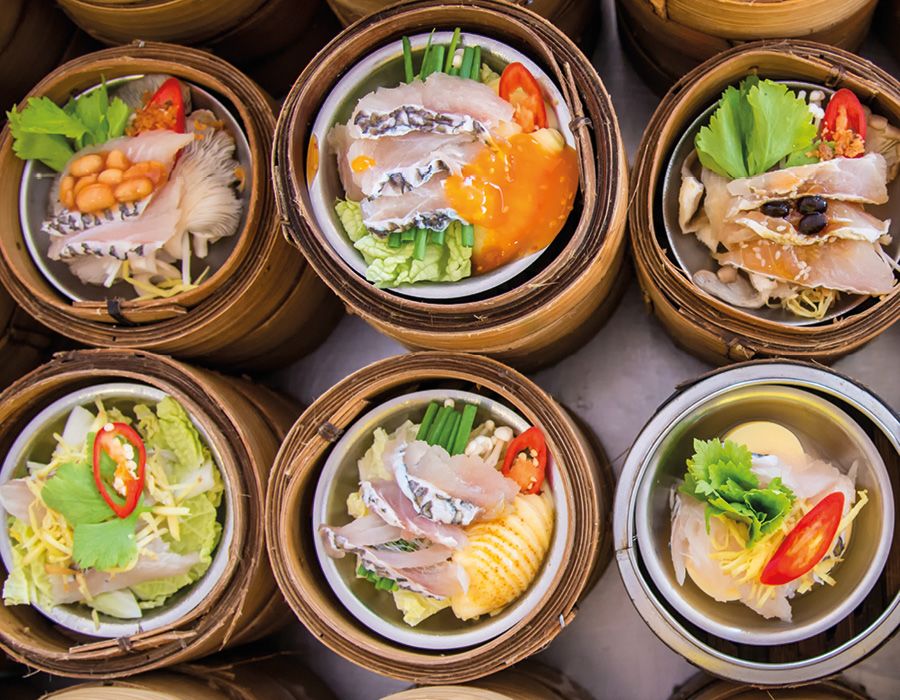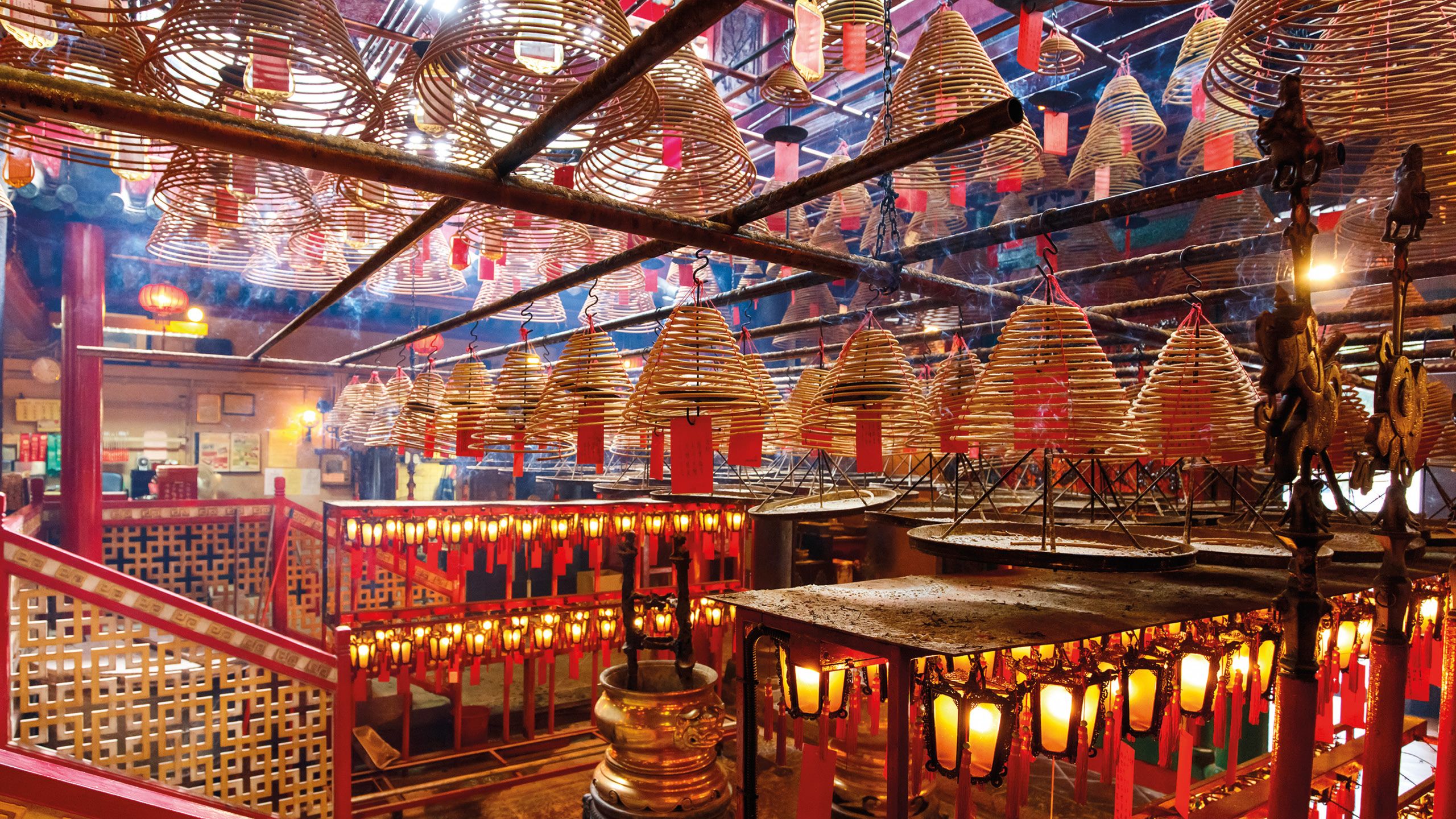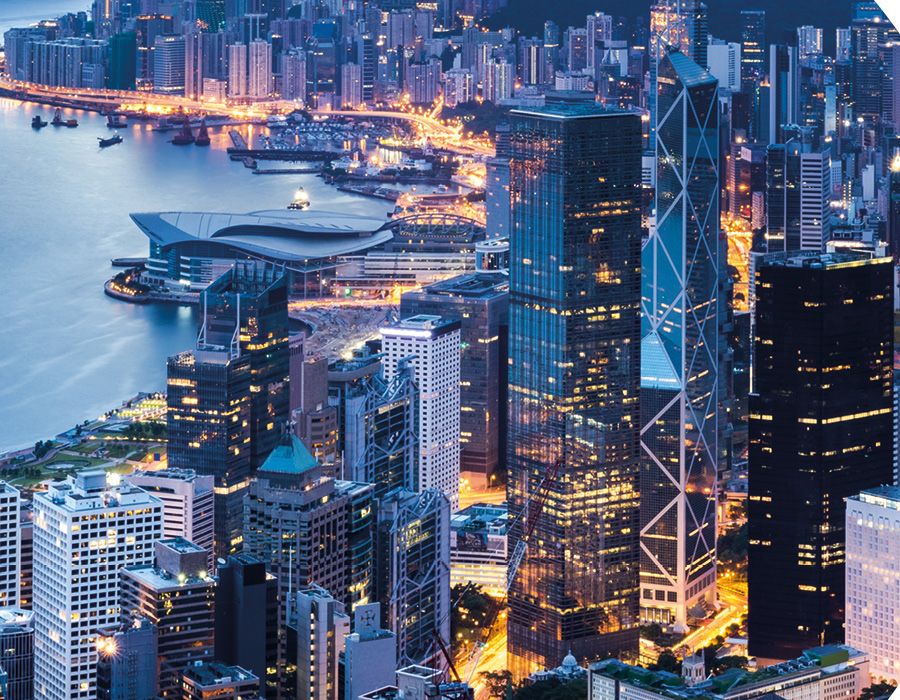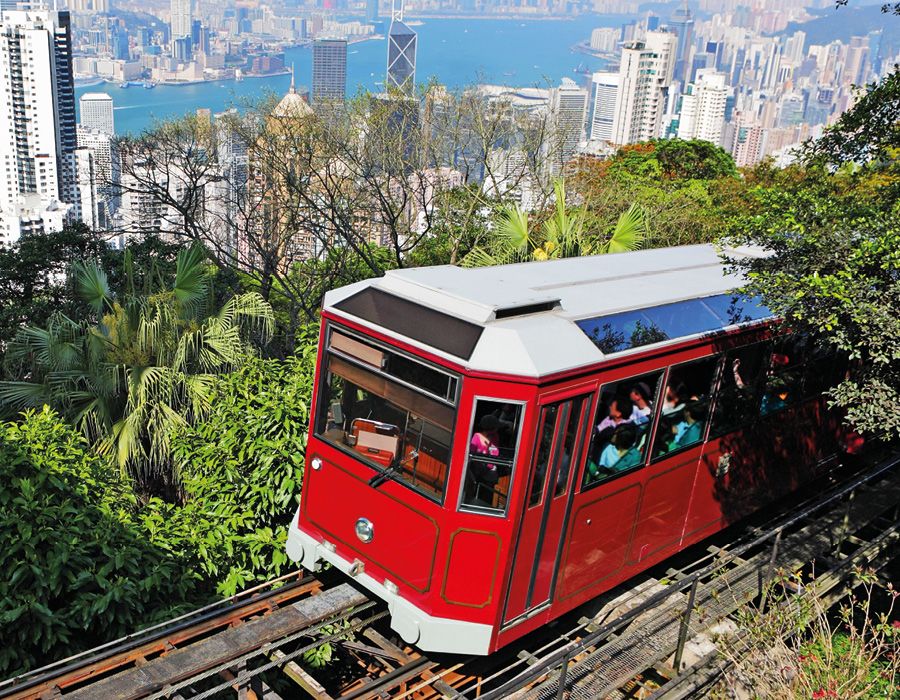
Hong Kong
Find arts, culture and Michelin-starred eateries
in this epic Asian city, says Penny Watson

Asmall archipelago and slither of mainland on China’s southern border, Hong Kong is a city of contrasts, a combination of East meets West, progress versus tradition, old versus new.
In Central, wet markets and old Buddhist shrines sit in the shadow of skyscrapers, cheap dumpling shops are as lauded as Michelin-starred restaurants and luxe malls stand side by side with artisan shops.
Across Victoria Harbour, Tsim Sha Tsui in Kowloon has big-name venue openings that connect global influence with local arts and culture.
Visitors on a short stay can split their time between these hubs. Walk the streets, visit the venues, and taste test the menus.

You're spoilt for choice with Hong Kong's dim sum eateries
You're spoilt for choice with Hong Kong's dim sum eateries
Day 1
Hong Kong Island is best discovered on foot, with an occasional tram, escalator or taxi ride. Start in Wan Chai, a neighbourhood transformed from a Chinese coastal fishing village into an exciting commercial hub. Zigzagging through the streets, find wet markets and colourful old tenement houses alongside residential high rises and fancy hotels. Around Star Street, Saint Francis Yard and Ship Street, independent boutiques sit next to cool designer shops and cafes where you can start the day with eggs benedict and caffe lattes.
Stroll to Queensway, Hong Kong Island’s main thoroughfare, to find a tram stop. With a prepaid card, take one of the city’s antique double-decker trams to Central, taking note of the famed architecture along the way, including the high-tech Norman Foster-designed HSBC building (with the two fu dogs at the front) and the neo-classical Old Supreme Court Building, which opened in 1912 and is now known formally as the Court of Final Appeal Building.
Jump off near Jubilee Street and use the Central Mid-Levels Escalators to explore the sloping streets. Shops and market stalls line the cobbles of Graham, Gage and Peel streets and you’ll come by Central Market, where vendors pay tribute to local trades and traditions. Tsim Chai Kee dumpling shop is perfect for lunch.
Continue on the escalator’s uphill gradient to Soho, a bustle of shops and bars, or exit right at Hollywood Road for a walk along one of Hong Kong’s oldest thoroughfares. This gently winding street passes low-rise terraces, vertiginous residential blocks, temples, colonial buildings and old banyan trees.
Visit PMQ, an arts and creative hub with its independent design shops, and not-for-profit Tai Kwun, an arts and cultural space in the old central police station.
When you reach the trendy neighbourhood of Sheung Wan, visit the Man Mo Temple, built between 1847 and 1862, and browse the antique shops.
Detour to Wing Lok Street and Des Voeux Road West to see the Chinese medicine and dried seafood stalls, and Tai Ping Shan Street with its retro cool tong lau shophouses.
A taxi ride will get you to The Peak for the city’s best mountaintop views, then return to Wan Chai on the Peak Tram and grab dinner at new Korean joint Danji, or tapas favourite 22 Ships.
Alternatively, hang around in Sheung Wan, another hot spot for quality restaurants. Book ahead for a seat at Enishi, a new teppanyaki restaurant featuring an 11-course menu. Alternatively, for a local taste sensation, Mora dishes up contemporary Chinese dishes with soya as the feature ingredient.

Day 2
Central might be Hong Kong’s heartbeat, but across Victoria Harbour Kowloon is catching up in terms of tourist attractions. Catch a Star Ferry across the choppy waters of Victoria Harbour to Tsim Sha Tsui. Stroll along the Avenue of Stars, a promenade with views across the harbour. Along the way, pop into
uber luxe shopping mall K11 Musea before treating yourself to breakfast at Rosewood Hotel’s Holt’s Cafe, which serves a contemporary take on Hong Kong’s cha chaan teng food culture.
Flag a taxi to Hong Kong’s most talked-about new opening, West Kowloon Cultural District, which opened in 2022 as a space where the local arts scene can “interact, develop and collaborate”. The venues have head-turning architecture and include Freespace (theatre and performing arts), Hong Kong Palace Museum, M+ (a gallery with 33 exhibition spaces) and Xiqu Centre (a Chinese opera theatre in a building inspired by traditional Chinese lanterns).
Chill out with a picnic on the grassy lawn at Artspace, ride a bike along the waterfront or save your appetite for one of the city’s most beloved traditions – afternoon tea at The Peninsula hotel.
Need to know
Visas: British citizens must apply for a visa in advance via www.immd.gov.hk
Time zone: GMT +8 hours
Currency: £1 = HK$9.91
A subway trip costs HK$15, a cup of coffee HK$52 and five-star hotel main course HK$280–420
What’s on: Check out Art Basel’s exhibition of 242 galleries from 40 countries (28–30 March) or the 23rd Hong Kong International Literary Festival (4–10 March).
What’s on the menu: For dim sum try Tim Ho Wan, for tapas it must be 22 Ships and for Italian it’s hard to beat 8½ Otto e Mezzo. There’s fine dining in heritage buildings in Sheung Wan, Michelin-starred menus in Central and cool bars in Wan Chai.

Warm welcome
I travelled to Hong Kong for the first time in early November for the conjoint diploma ceremony with the College of Surgeons of Hong Kong (CSHK). It was a memorable trip. I climbed The Peak after dark, causing consternation to some wild boars and a porcupine, and got lost in the back streets of Sham Shui Po looking for a 2nd-century burial mound.
The food was brilliant, although not everyone got on with the fish bladder soup. But then my wife was once asked by a Sichuan restaurant if I was Chinese because I always search out the spicy pig intestines on the takeaway menu – Hong Kong did not disappoint on that score either.
Mark Egan RCSEd CEO

Take the Peak Tram to enjoy panoramic mountaintop views
Take the Peak Tram to enjoy panoramic mountaintop views
